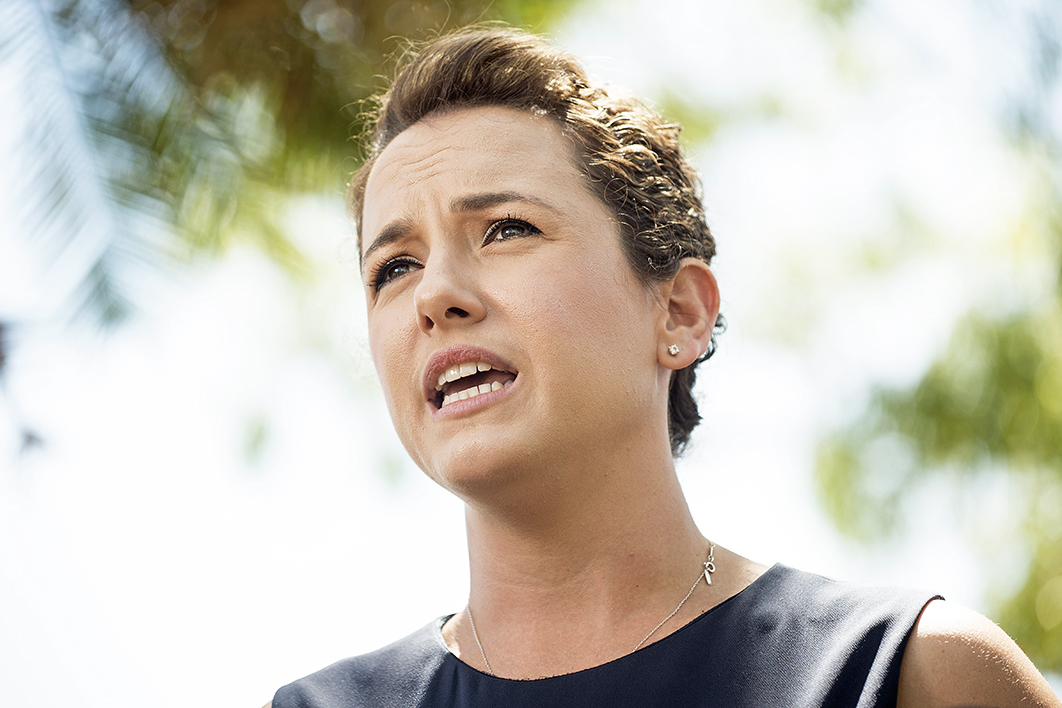Behind sealed borders, counting continues for Australia’s first Covid-19 election.
The headline result is the very likely return of the Gunner Labor government in the Northern Territory. Elected four years ago with 57.5 per cent of the territory-wide two-party-preferred vote and eighteen out of twenty-five seats, it seems to have emerged this time with thirteen or fourteen seats. The Country Liberal Party opposition, reduced to just three MPs in 2016, will soon boast a semi-respectable seven or eight.
No mere seat tally can do justice to the skulduggery and vindictiveness that have characterised NT politics over the past four years (and more). One result was the formation of a breakaway party, Territory Alliance, which attracted more than double the support of the CLP at the Johnston by-election in February and came a close second to Labor.
But that was then. On Saturday, Territory Alliance put in a very SA Best performance, attracting — on current numbers — only 13 per cent of the vote (14.8 per cent across the twenty-one electorates it contested) and (probably) grabbing one spot, that of the sitting member Robyn Lambley. Territory Alliance’s leader, former CLP premier Terry Mills, lost his electorate quite badly, as did sitting ex-Labor MP Jeff Collins.
Note that Mills and Lambley had both easily retained their seats as independents in 2016. Territory Alliance must be judged, like its southern insurgent counterpart, a fizzer.
When the crossbench going into an election accounts for almost a quarter of parliament and the major parties receive barely 70 per cent of the primary vote between them, the meaningfulness of aggregate (territory-wide) two-party-preferred numbers — and of that tool that relies on them, the pendulum — can be doubtful.
But the pendulum did pretty well on Saturday.
A literal pre-election reading of Antony Green’s version had Labor needing to keep the swing against it down to 2.8 percentage points or less — that is, achieve a total two-party-preferred vote of 54.7 per cent or more — to retain a majority. And that’s roughly what it has done, with the swing currently aggregating, from the seats with two-party-preferred counts, to around 2 or 3 per cent. Full preference allocations and more postal vote counts will probably increase this a bit. The shrinking of the crossbench from six to two or three has created more space for majority government.
But in most Australian jurisdictions 54-ish per cent of the vote after preferences would translate to a seat landslide.
The 2012–16 CLP government changed the voting system from compulsory preferential (you must number every square) to optional preferential; the Gunner government changed it back. Because Territory Alliance took more support away from the CLP than from Labor and recommended the CLP on its how-to-vote cards in eighteen out of twenty-one seats, it’s pretty certain Labor would have performed better under optional preferential this time. But then electoral arrangements influence political decisions, and under that system Territory Alliance might not have formed, or at least not run as many candidates.
(As a rule, compulsory preferences assist minor parties and independents because each major party will usually put the insurgent higher on its how-to-vote cards than it puts the other major party. Not always, as One Nation can attest, but usually.)
By all accounts the Gunner government had a disappointing first term. Three of its number were booted out of caucus for publicly airing concerns about budget blowouts, for example. (One then quit parliament early, causing that Johnston by-election, one remained as an independent but retired at this election, and one unsuccessfully contested his seat as a Territory Alliance candidate.)
And disunity is death, isn’t it? So why didn’t this bickering government meet its maker, like its one-term predecessor?
There’s a tendency among election observers to shoehorn facts into our narratives so as to remember election results in ways that vindicate the disunity truism. Labor’s thumping 2016 Territory victory, after the disarray of the CLP government, fits the equation perfectly. The 2019 federal election would have worked nicely if Labor had prevailed, but instead the Morrison government had to be reinvented: it hadn’t been a riven, leaderless rabble after all.
Covid-19 has done wonders for all incumbents, bestowing on leaders a wartime gravitas. As elsewhere, Gunner took charge, putting in place restrictions, exercising control of organs of state, dispensing largesse. And shutting borders to southerners — can it get any better?
More importantly, though, the CLP faced a structural problem beyond its control. It’s much harder to achieve a big swing at a state or territory election when your own party holds federal government. As this table shows, historically the big swings, in fact the big wins, are nearly always against the party whose counterpart occupies the treasury benches in Canberra.
Voters don’t usually seem able to put in the effort otherwise.
The next Covid-19 election is in the Australian Capital Territory in mid October: Labor usually wins there, and anyway who outside Canberra cares? But pencil in 31 October and the Queensland contest, where only a small swing is needed to change government. •





